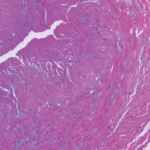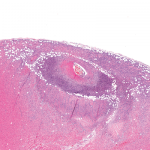 Julia A. Ford, MD, is a recent graduate of the rheumatology fellowship at Brigham and Women’s Hospital, Boston, and is now a clinical assistant professor at the University of Michigan, Ann Arbor.
Julia A. Ford, MD, is a recent graduate of the rheumatology fellowship at Brigham and Women’s Hospital, Boston, and is now a clinical assistant professor at the University of Michigan, Ann Arbor.
 Robert Padera, MD, PhD, is an associate professor of pathology at Brigham and Women’s Hospital and Harvard Medical School.
Robert Padera, MD, PhD, is an associate professor of pathology at Brigham and Women’s Hospital and Harvard Medical School.
ad goes here:advert-1
ADVERTISEMENT
SCROLL TO CONTINUE
 Lindsey A. MacFarlane, MD, MPH, is an instructor in medicine at Harvard Medical School and a member of the rheumatology faculty at Brigham and Women’s Hospital.
Lindsey A. MacFarlane, MD, MPH, is an instructor in medicine at Harvard Medical School and a member of the rheumatology faculty at Brigham and Women’s Hospital.
Acknowledgment
The authors thank William Docken, MD, and Magda Abdou, RVT, for their assistance in preparing this article.
ad goes here:advert-2
ADVERTISEMENT
SCROLL TO CONTINUE
References
- Ruiz-Masera JJ, Alamillos-Granados FJ, Dean-Ferrer A, et al. Submandibular swelling as the first manifestation of giant cell arteritis. Report of a case. J Craniomaxillofac Surg. 1995 Apr;23(2):119–121.
- Förderreuther S, Ihrler, Küchle CCA. Giant cell arteritis presenting as a periorbital pain syndrome and a submandibular mass. Cephalalgia. 2003 May;23(4):314–317.
- Porter MJ. Temporal arteritis presenting as a submandibular swelling. J Laryngol Otol. 1990 Oct;104(10):819–820.
- Zaragoza JR, Vernon N, Ghaffari G. Tongue necrosis as an initial manifestation of giant cell arteritis: Case report and review of the literature. Case Rep Rheumatol. 2015;2015:901795.
- McKendry RJ, Guindi M, Hill DP. Giant cell arteritis (temporal arteritis) affecting the breast: Report of two cases and review of published reports. Ann Rheum Dis. 1990 Dec;49(12):1001–1004.
- Butendieck Jr RR, Abril A, Cortese C. Unusual presentation of giant cell arteritis in 2 patients: Uterine involvement. J Rheumatol. 2018 Aug;45(8):1201–1202.
- Talarico R, Boiardi L, Pipitone N, et al. Isolated aortitis versus giant cell arteritis: Are they really two sides of the same coin? Clin Exp Rheumatol. May-Jun 2014;32(3 Suppl 82):S55–S58.


